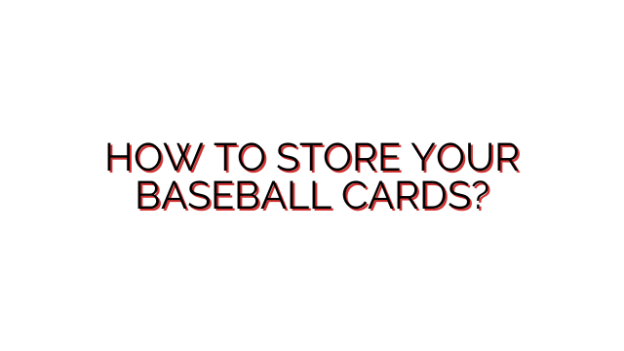There are several important factors to consider when properly storing your baseball card collection. The main things you want to do are protect the cards from damage and prevent degradation over time. Baseball cards are collectibles that can be valuable, so taking the right steps to store them correctly is crucial to maintain their condition.
One of the best ways to store cards is in magnetic or screw-down baseball card pages. Magnetic pages have a slot for each card and a magnetic layer on the back that holds the card securely in place. Screw-down pages use small plastic screws to tightly affix each card. Using pages makes it easy to organize your collection by player, team, year or any other category. It also protects the edges and surfaces of the cards from bumps and scratches that could occur if they were loose in a box. Make sure to only purchase high-quality acidic-free pages that will not damage the cards over decades of storage.
Once you have your cards safely housed in pages, those pages need to be properly stored. A sturdy baseball card storage box is ideal. Look for an acid-free box made of archival-grade cardboard that has a tight-fitting lid. The box should be large enough to hold all your pages comfortably with no cramming but also not too big to prevent wasted space. Properly sealing the box is important to protect the contents from dust particles and other contaminants in the air.
Inside the storage box, consider adding small acid-free paper sheets between each set of pages for additional protection against scratches during transport or accidental bumps. Some collectors also like to slip each page into a transparent, polypropylene sleeve or toploader for a smooth, slick surface between the cards and pages. This further protects edges and surfaces.
Once your boxes are packed with organized pages and cards, find a cool, dry place to store them long-term. An area with stable temperatures between 60-75 degrees Fahrenheit and 40-50% relative humidity is ideal. Fluctuations in temperature or humidity can damage the paper and ink over time. Basements are usually too damp while attics may experience extremes. The best spots tend to be interior closets, dedicated storage rooms, or even a safety deposit box. Make sure to elevate boxes a few inches off the floor in case of minor flooding.
Rotating your storage location every few years is also recommended to prevent light damage accumulation in any one spot. Ultraviolet light from windows can bleach card colors and damage the paper. For short-term storage of active collection areas while displaying other cards, specially-designed wood or metal card cabinets with acid-free materials work well too. Just be sure to move boxes occasionally.
Proper handling is also important when accessing your stored collection. Always wash or disinfect hands before touching cards to prevent acid/oil transfer from skin. Handle cards by the edges and corners only, avoiding direct fingerprint contact with surfaces. Get in the habit of storing cards securely back in their pages and boxes immediately after inspecting to prevent damage.
With the right enclosed storage boxes, acid-free binding pages, environmental storage conditions and careful handling techniques – your baseball card collection can be preserved safely for decades to come. Taking these small steps ensures the greatest longevity possible so future generations can still enjoy the collectibles as intended. Proper long-term storage is essential to maintain value over the years for valuable autographed, rookie or especially rare baseball cards.


